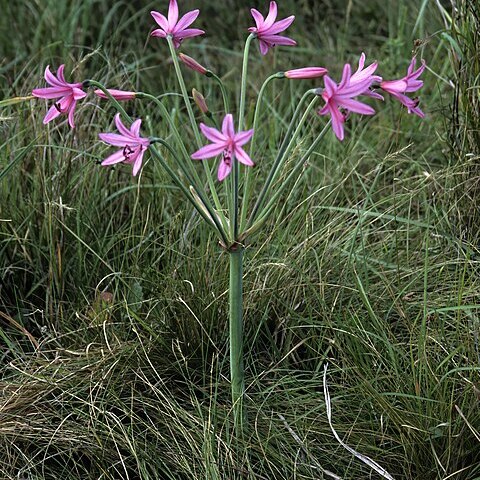Perennial geophyte, 0.6-0.8 m high; bulb neck exposed, tunics parchment-like. Leaves ± 9-15, green at flowering, suberect, narrowly tongue-shaped, 30-100 mm wide, pale to grey-green, smooth. Flowers ± 30, suberect at first, spreading later; perianth tube ± 5 mm long, segments 40-70 mm long, ± evenly spreading, pink with a darker pink median stripe; pedicels initially curved near ovary. Flowering time Jan.-Apr. Fruit an ovoid capsule.
Geophyte, up to 400 mm high. Leaves 8-20; produced about same time as scape; ascending when young and only spreading on ground with age; blade tongue-shaped, 200-450 x 25-45 mm, falcate, glabrous. Flowers: in a ± 30-flowered umbel; peduncle ± 450 mm high; pedicels 15-25 mm long; perianth 6-parted, ± 50-70 mm long, nearly equally spreading, light to dark pink; Jan. Fruit an inflated capsule.
Geophyte, up to 400 mm tall. Bulb oval with no neck. Leaves Ungulate, pale green, falcate, flat, erect, roughish. Perianth 6-parted, nearly equally spreading. Flowers pink.

